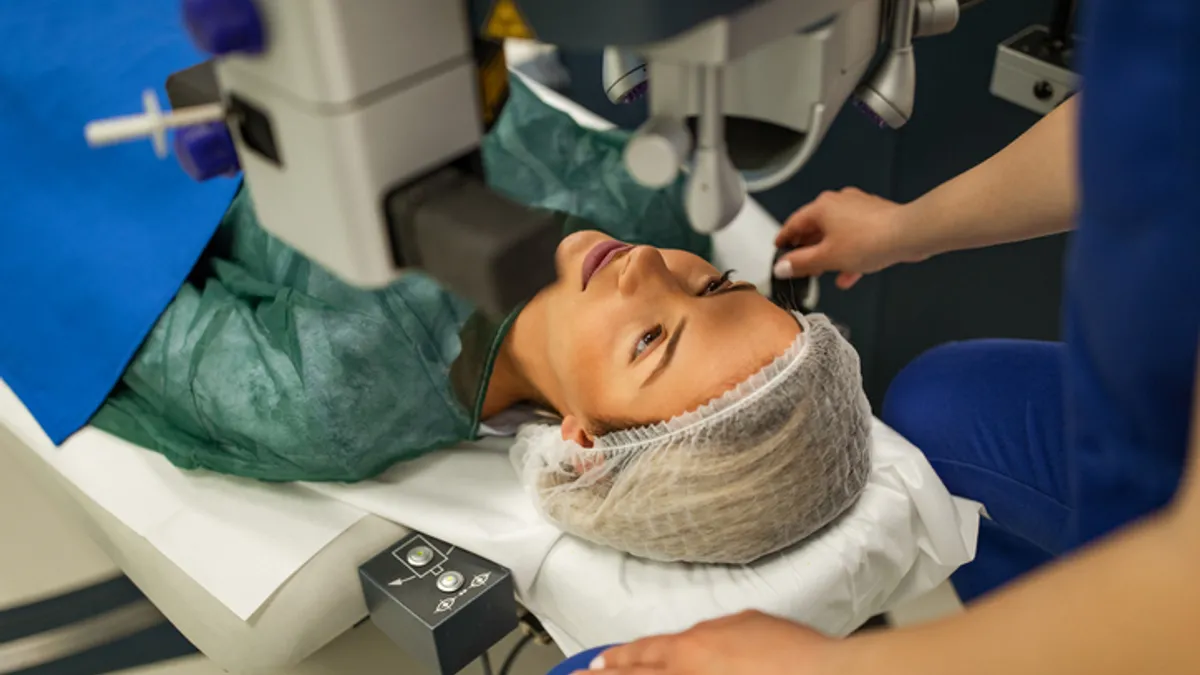Two quarters of slowing laser vision correction procedures are raising questions about whether demand is slowing or simply returning to normal levels after a busy 2021.
In total, 194,461 procedures were performed in the second quarter of 2022, including Lasik, small incision lenticule extraction (SMILE), and implantable lenses. That’s down 16% compared to the year-ago period, BTIG Analyst Ryan Zimmerman wrote in an Aug. 18 research note, citing data from trade group the Refractive Surgery Council.
The report includes procedure volumes from manufacturers Alcon, Johnson & Johnson, Staar Surgical, Zeiss and Ziemer, as well as the American Society of Cataract and Refractive Surgery.
Procedure volumes also were down 8.8% in the first quarter compared to the same period in 2021.
That’s after a record year for laser vision correction procedures, with roughly 832,000 in 2021. By comparison, before the pandemic, there were about 725,000 to 750,000 procedures per year, according to the note.
The early 2022 slowdown raises questions about whether there was a pull-forward of demand in 2021, or if rising inflation or weakening consumer sentiment are contributing to waning procedure volumes, Zimmerman wrote.
What does that mean for manufacturers of these products?
For companies including eye-care firm Alcon, and Staar Surgical, which specializes in implantable lenses, it isn’t likely to translate to a material impact on their businesses, according to the research note.
In part, that’s because cataract equipment sales largely drove Alcon’s second quarter results, even as sales of refractive surgery equipment were weaker. For Staar, the company is so early in the launch of its Evo implantable lens in the U.S., that even if there was a pull-forward or an overall slowdown in demand, “it's largely immaterial as [Staar] is not likely to reach scale until FY23,” wrote Zimmerman.
For the full year 2022, laser vision correction procedure volumes in the U.S. are expected to decline about 5% from last year, at 790,000 total procedures.











